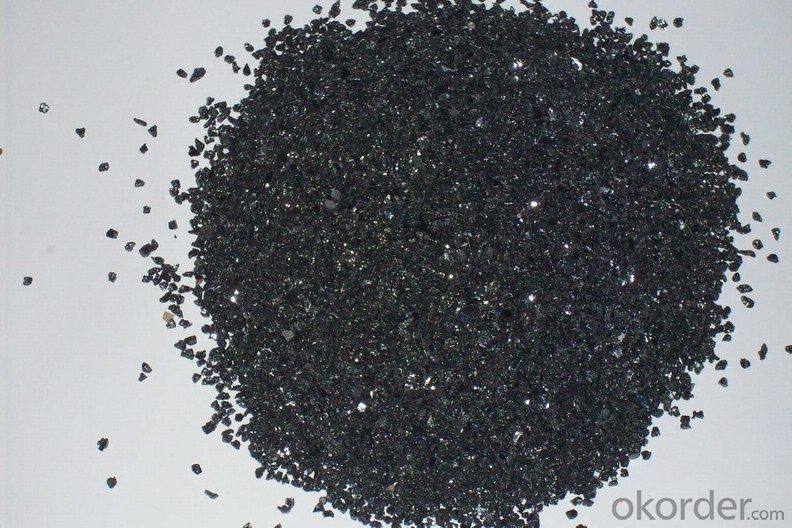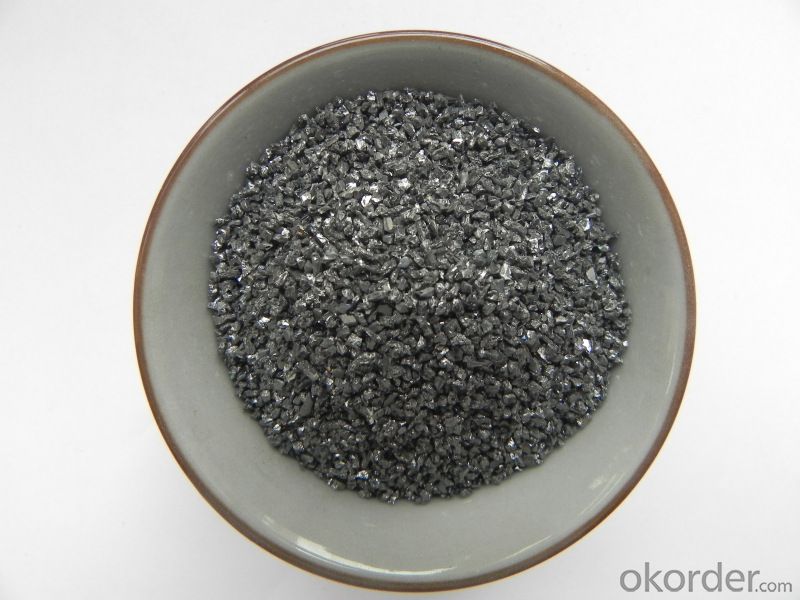Loading Port:China main port
Payment Terms:TT OR LC
Min Order Qty:25 m.t.
Supply Capability:2000 m.t./month
| Place of Origin: | Henan, China (Mainland) | Brand Name: | CNBM | Model Number: | Si-C |
| Application: | refractory or abrasives | Shape: | Lump | Material: | SiC |
| Dimensions: | Si:56%±1, C:17±1 | Chemical Composition: | Silicon ,Carbide |
| Packaging Details: | 1mt/big bag |
| Delivery Detail: | with 20 work days after deposit |
Product Description
Steelmaking Deoxidizer Silicon Carbide Replacing for Ferro Silicon
As the new alloy for converter, Si-C alloy can replace Ferro Silicon to be used as deoxidizer.
Characters: lower steelmaking cost, increase economic benefit, improve product quality and stable performance.


Si-C:
1. Replace Ferro Silicon
2. Reduce the alloy quantity
3. Improve the quality of liquid steel (reduce carburant )
4. Lower production cost
Optimization Solutions:
Steel | FeSi Solution | Si-C Solution |
HRB335 | MnFe+FeSi+SIAlFe+SiC+Carburant | MnSi + Si-C |
Q195 | MnFe+FeSi+SiAlBaCa+Wire Feeding | MnSi+Si-C+SiAlBaCa+Wire Feeding |
Q235 | MnFe+FeSi+ SiAlBaCa+Carburant | MnSi+Si-C+SiAlBaCa |
How to Use?
HRB335: During tapping, add SiMn Alloy when the liquid steel tapped about 1/3, at the same time, put Si-C gradually to the steel ladle.
Q195: During tapping, add SiMn Alloy when the liquid steel tapped about 1/3, then SiAlBaCa, at the same time, put Si-C gradually to the steel ladle, and feed wire at argon blown station.
Q235: During tapping, add SiMn Alloy when the liquid steel tapped about 1/3, then SiAlBaCa, at the same time, put Si-C gradually to the steel ladle.
Chemical Compositions:
Si (%) | C (%) | Ca | |
Si-C | 56±1 | 17±1 | / |
Advantages:
1. Si-C can replace Ferro Silicon and Carburant to do the deoxidation alloying.
2. Using Si-C instead of Ferro Silicon will help to improve the quality of steel.
3. It will helps to lower the cost, gain profit and strength the competitive advantage.
Stability of the Alloy Element
Steel |
Item | Category | |||
Unit | Test Steel | Un-test Steel | Comparison | ||
HRB335 | No. of Heat | Heat | 17 | 30 | |
Internal Control Qualification Rate of C, Si, Mn | % | 100 | 86.7 | +13.3 | |
Mean Squared Error of Mn | % | 0.042 | 0.073 | -0.034 | |
Mean Squared Error of Si | % | 0.048 | 0.071 | -0.023 | |
Mean Squared Error of C | % | 0.012 | 0.014 | -0.002 | |
HRB400 | No. of Heat | Heat | 20 | 58 | |
Internal Control Qualification Rate of C, Si, Mn | % | 88.2 | 77.6 | +10.6 | |
Mean Squared Error of Mn | % | 0.074 | 0.077 | -0.003 | |
Mean Squared Error of Si | % | 0.043 | 0.080 | -0.037 | |
Mean Squared Error of C | % | 0.015 | 0.018 | -0.003 | |
Q235 | No. of Heat | Heat | 18 | 30 | |
Internal Control Qualification Rate of C, Si, Mn | % | 72.2 | 53.3 | +18.9 | |
Mean Squared Error of Mn | % | 0.044 | 0.039 | +0.005 | |
Mean Squared Error of Si | % | 0.041 | 0.042 | -0.001 | |
Mean Squared Error of C | % | 0.015 | 0.016 | -0.001 | |
From the above form, we can get the result that using Si-C alloy can help to improve the qualification rate.
Mechanical Property Comparison:
From the above forms, we can get the conclusion that, the mechanical property of the test steel, which has used SI-C, can be much more stable.
After using SI-C alloy, the average tapping temperature has been improved 9℃, and the average temperature drop has also increased 6℃.
We can see from the data that, using Si-C alloy can helps to save cost about 4.787RMB.